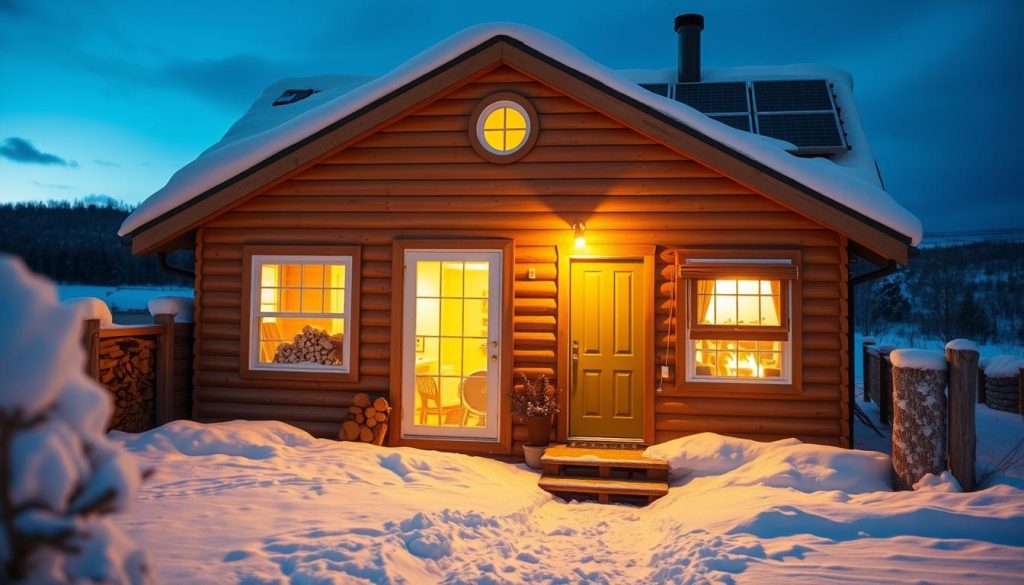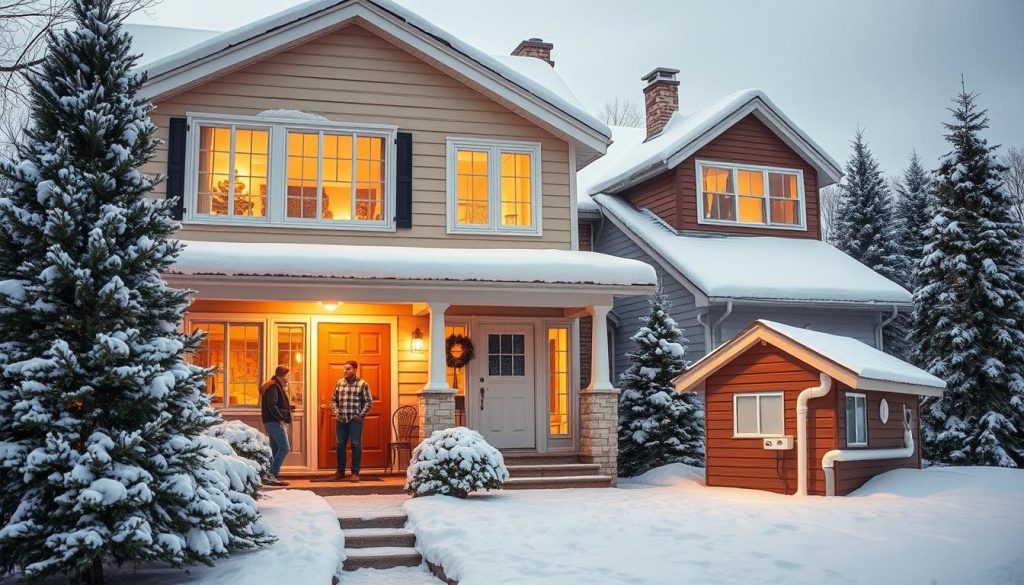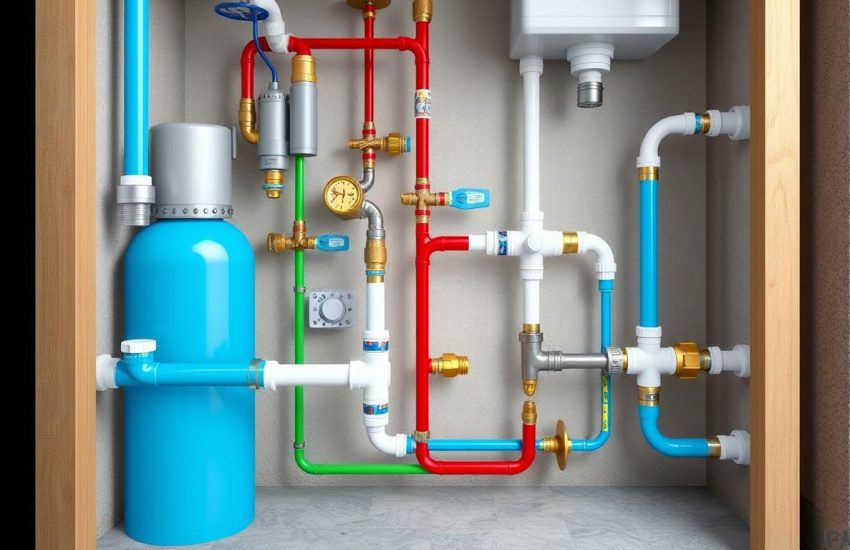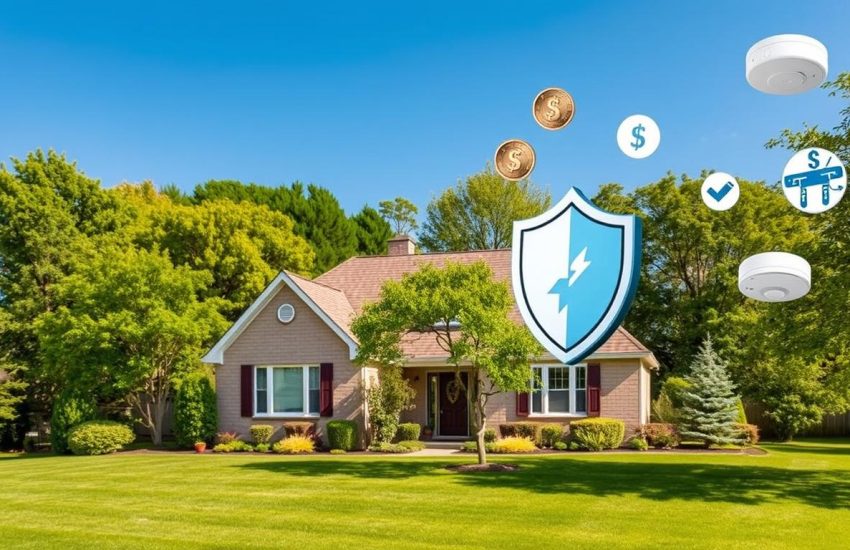Winter-Proofing Your Home: A Complete Guide for Homeowners
Getting your home ready for winter is key. It’s not just for comfort. It’s also to protect your investment and stop costly problems. When the cold air comes and leaves fall, it’s time to make your home strong against the cold. Being ready can save you money and keep your home energy efficient.
Start by checking the outside of your home. Make sure your gutters are clean to prevent ice dams. Look at your roof for any damage, seal your doors and windows, and protect your pipes from freezing.
Inside, focus on making your home warm and comfy. Clean your furnace filters and maybe get an HVAC check-up. Use your ceiling fans differently, and set up a programmable thermostat. Good insulation keeps you warm and saves money. Don’t overlook these steps. They can make your home a cozy place.
For those looking for smart ways to upgrade on a, there’s plenty of advice out there. These tips can help you stay warm and spend less.
Key Takeaways
- Critical exterior checks and repairs can significantly reduce the risk of winter damage.
- Interior preparations, such as HVAC maintenance, contribute greatly to a warm and efficient home atmosphere.
- Investing in quality insulation and smart technologies pays off in lower energy bills.
- Understanding and utilizing homeowner discounts can bring significant home improvement savings.
- DIY solutions for winter-proofing can be both rewarding and economical.
- Regular seasonal maintenance is instrumental in saving money on winter-proofing your home and protecting investment.
Why Focus on Winter-Proofing Your Home?
Making your home ready for winter is smart. It keeps you cozy and saves energy. It also guards your property investment. Winter-proofing yourself helps avoid costly issues like pipe bursts.
Good insulation and tight exteriors save heat and cut down on energy use. Energy-saving windows and better siding boost your home’s warmth. This means less heat is lost, and your house stays snug.
Remember, insulated homes do not only retain more heat but also stand stronger against winter’s harshness, ensuring that every improvement contributes towards a comfortable and sustainable living environment.
| Upgrade | Benefits |
|---|---|
| Energy-Efficient Windows | Reduces condensation and heat loss |
| Advanced Insulation (attics, walls) | Minimizes heat escape, lowering energy bills |
| Exterior Insulation and Finish System (EIFS) | Improves thermal resistance and exterior aesthetics |
| Sealing Drafts & Installing High-quality Siding | Ensures effective insulation and durability against extreme temperatures |
Protecting investment in your home by winter-proofing prevents issues like frozen pipes. Keep your home’s temperature steady and watch your thermostat. The University of Minnesota and the U.S. Department of Energy back this advice.
- Leave faucets dripping slightly on extremely cold nights to prevent freezing.
- Keep cabinet doors open to allow warm air to circulate around pipes.
- Disconnect and insulate outdoor faucets to stop freezing and subsequent damage.
By using these home improvement tips, you make sure your home is safe, efficient, and warm all winter.
DIY vs Professional Help
DIY winter-proofing your home can be both fun and save you money. Many people add weather-stripping, foam gaskets, and door sweeps to keep warm. Using thermal curtains and water heater blankets also helps, and won’t cost a lot.
But, professional assessment value is also key for complicated tasks. A pro can view your home in detail, which might seem costly at first. Yet, it stops future expensive fixes. They find where to insulate and spot hidden cracks or leaks.
The value of professional help means balancing DIY with expert tips. The cost of a professional energy audit can save money later. It shows where your home loses heat through special tests.
| Task | Recommended DIY | When to Get Professional Help |
|---|---|---|
| Insulation Upgrade | Adding reflector panels behind radiators | Installing insulation measured by R-values in attics |
| Heating System Maintenance | Bleeding radiators | Annual boiler service and sweeping chimneys |
| Weatherproofing | Installing drafts excluding devices like door sweeps | Comprehensive sealing and weatherproofing of doors and windows |
DIY projects are not only affordable but also let you know your home better. Doing things like changing furnace filters and cleaning gutters is easy. And it really helps keep your home in good shape.
But, hiring pros for things like better insulation or deep energy checks is wise. They give professional assessment value, protecting your home from costly damages later.
In the end, using both DIY methods and pro advice works best. This way, you can DIY winter-proof your home safely and affordably.
How to Save Money
Utility companies are raising rates. The cost of natural gas has hit highs not seen in over ten years. Homeowners are now looking for affordable winter-proofing your home solutions more than ever. With winter heating costs possibly going up by 17.2% compared to last year, strategic home maintenance is key.

Installing insulation in your attic could lower heating costs by up to 50%. The Department of Energy tells us to keep indoor temps at 68°F to save energy. Also, buying a smart thermostat can further reduce what you spend on energy.
| Method | Product | Price |
|---|---|---|
| Window Sealing | Duck Window Insulation Film Kit | $13 |
| Door Draft Blocker | DeeTool Door Draft Stopper | $18 |
| Weather Strip | Duck Heavy-Duty Weatherstrip Seal | $7 |
| Electrical Socket Insulation | Duck Socket Sealers 24 Pack | $22 |
| Caulking Tools | Newborn 960-GTR Caulking Gun | $25 |
Using cost-effective solutions like draft snakes saves money. You can make them from old stuff and block cold air. Sealing leaks around windows and doors also helps.
Think about furnace maintenance for more savings. Clean filters and a well-working heating system extend its life and effectiveness. A simple act like running your ceiling fan in reverse spreads warm air around.
These tips help with affordable winter-proofing your home. They give you ways to use less energy and still stay warm. Following these tips, you can have a cozy winter without high heating bills.
Step-by-Step Upgrades
Getting your home ready for winter is key. It makes your place warm and saves money. Wrap up your home and update heating to stay comfy. Let’s see how to get your house winter-ready.
First, stop heat from escaping. Seal gaps where warm air leaves, saving lots of energy. Adding things like weather-stripping around doors keeps the warmth in. Insulate your attic and walls to keep more heat inside. Foam siding helps too, stopping heat from leaking out.
Your heating system needs care too. Make sure it can keep up with the cold. Switching to eco-friendly heaters is smart. They work well in the cold and are good for the planet.
- Check and switch out HVAC filters to keep air moving and save energy.
- A programmable thermostat reduces heat when you’re out, cutting your bill by 15% yearly.
- Seal your ducts. Leaks can lose 20-30% of your heating, so fixing them helps a lot.
Don’t forget about windows. Changing old ones can cut energy loss by 30%. Go for double-glazed ones to keep warm and reduce noise. Tax credits can help pay for new windows, saving you money.
Be ready for any emergency. Gather essentials like water and food. Check your detectors to stay safe. This keeps you prepared for anything.

By doing these things, you can keep your home warmer, lower your bills, and be safer. Enjoy a comfy and safe winter!
Final Tips for Success
As the cooler months come, homeowners look for seasonal safety and energy savings. You’ll want to keep your home cozy and safe. Start by adding weather stripping to doors and windows. This simple step stops warm air from escaping. Also, check your roof for any damage. Repairing tiles before winter can prevent leaks.
Getting an energy assessment can show you how to lower your heating bill. By using a programmable thermostat, you could save up to 20% on heating. Insulating your pipes and updating your hot water tank can also save money. These steps help save the planet too.
Using smart tech like thermostats, efficient appliances, and LED bulbs saves energy. These can cost more at first but reduce bills over time. For example, honeycomb cellular shades improve insulation at windows. Also, installing flood barriers and valves can prevent costly damages from bad weather.
Last of all, remember balance is important. While protecting your home, also keep up with maintenance. Things like chimney draught excluders and gutter guards are vital. They keep your home safe from fires and mess. These tips prepare your home for winter, ensuring safety and saving money.



